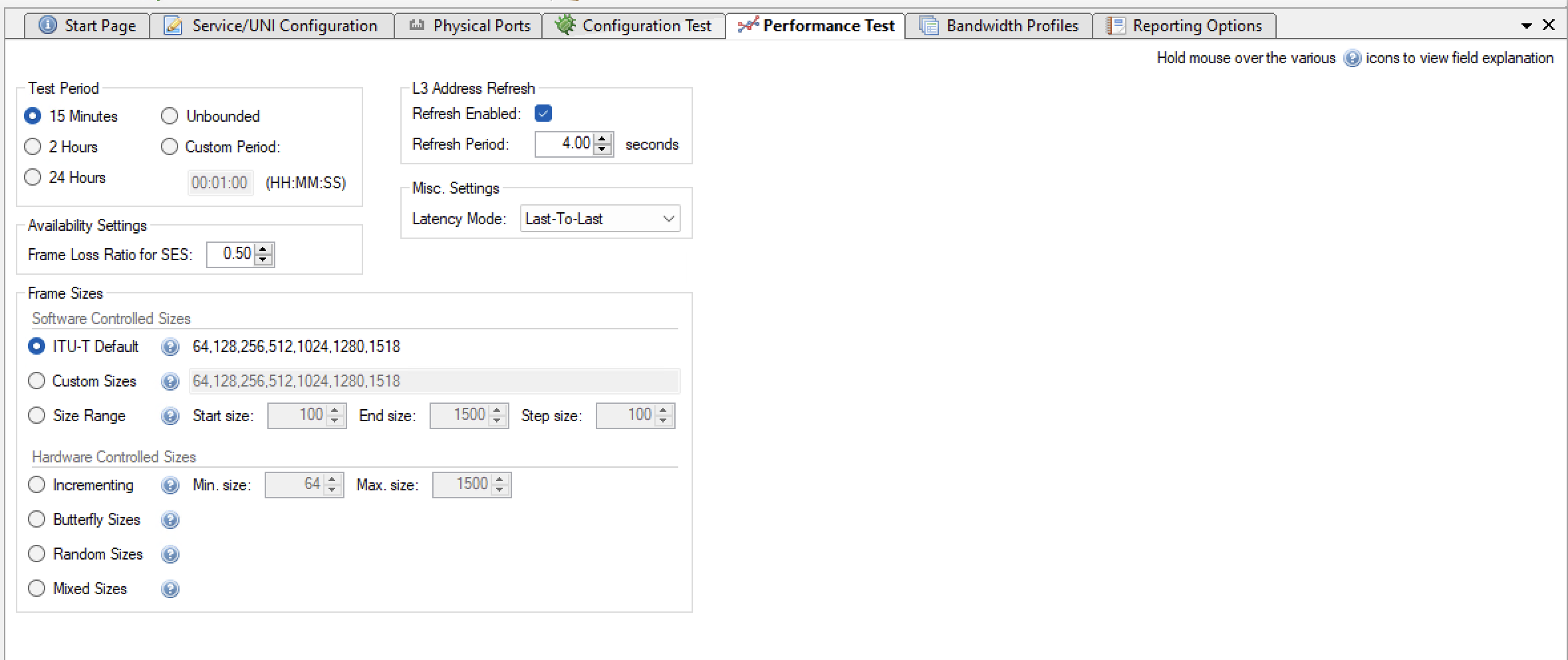Performance Test Panel

Fig. 36 Performance Test Panel
Time Period
Select how long you would like to run the test.
Unbounded mean it will stopped manually by the user.
Availability Settings
The Ethernet service availability definition is based on a model which uses two states corresponding to the ability or inability of the network to sustain the service in the available state. Transitions between the states of the model are governed by the occurrence of patterns of Severe Errored Second (SES) in the Ethernet layer (SESETH). This Recommendation views availability from the network perspective, where availability performance is characterized independently of user behavior.
A period of unavailable time begins at the onset of 10 consecutive SESETH outcomes. The corresponding period of time is considered to be part of unavailable time. During the unavailable time period, the Ethernet network is in unavailable state. A new period of available time begins at the onset of 10 consecutive non-SESETH outcomes. The corresponding period of time is considered to be part of available time. During the available time period, the Ethernet network is in available state. The figure below illustrates the definition of criteria for transition to/from the unavailable state.
This definition of availability has been chosen to allow comparison with other link layer techniques.

Fig. 37 Criteria for transition to/from the unavailable state
See also
Detailed explanation in ITU-T Y.1563
L3 Address Refresh
If the Enable Refresh checkbox is checked the tester will periodically emit ARP requests (for IPv4) or Neighbor Advertisement requests (for IPv6).
The period can be set using the Refresh Period field.
Misc. Settings
Latency Mode: Select the Latency mode to be measured.
Frame Sizes
ITU-T Default
The default setting is to use the ITU-T standard frame sizes: 64, 128, 256, 512, 1024, 1280 and 1518 bytes.
Custom Sizes
Lets you specify a comma-separated list of values - useful if you only want to test using one or two packet sizes
Size Range
Lets you specify a a range of packet sizes and the steps.
Incrementing Sizes
Lets you specify a Min and Max size - the sizes: Min,Min+1,Min+2,…,Max.
Butterfly Sizes:
Lets you specify a Min and Max size - the sizes: Min, Max, Min+1, Max-1, Min+2, Max-2,…
Random Sizes:
Lets you specify a Min and Max size - the sizes will vary between Min and Max randomly.